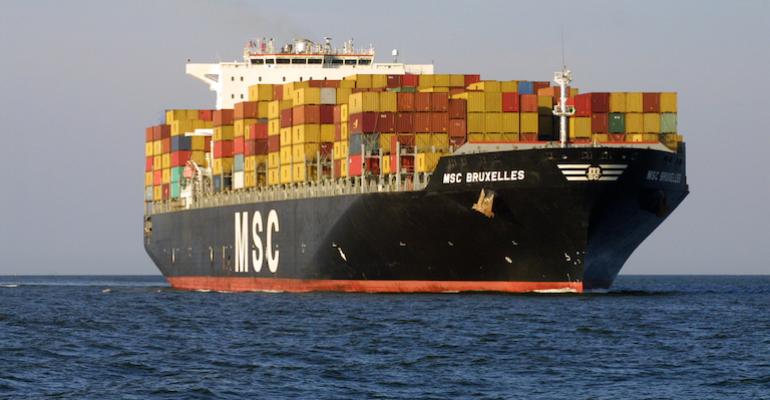Seafarers used to say that “the old ships were always the best,” usually, it has to be said, after they had safely moved to something more modern. They were probably right – the older ships would have younger people aboard them with less formality than would be found aboard the new, posh vessels.
There were some interesting comments circulating about the giant carrier MSC when clever analysts revealed that they were operating more ships of over 20 years old than was any other containership operator. There appeared to be almost a veiled criticism around this revelation, forgetting that this gigantic containership operator also had plenty of new, giant ships, which to many would have represented a well-balanced fleet.
There are plenty of other operators, albeit of more modest size, which have been active in the second-hand market, but few can have accumulated such a huge fleet of “used” ships as MSC. It might be suggested that the purchase of such tonnage is not for the faint-hearted and certainly not for a company without heavy technical expertise available, capable of sorting out ships with potential, from the turkeys that will bring only trouble and expense. The availability of experienced and willing engineering staff, who will keep older ships running efficiently and well, would also be not an option.
Quite why the 20-year lifespan of a ship, should be the cause of comment is difficult to determine. Owners, especially from Japan, used to focus on the 3rd Special Survey at 15, as a date for probable disposal, the price reflecting whether the sale was before, or after, this magic number. The rationale was that after this date the cost of routine repairs would start to climb.
Other operators would have been brought up to believe that a ship was nicely run in at 20, if it had been properly maintained from delivery. And charterers, who have insisted on “young” tonnage, have been rightly criticised on the grounds that this scarcely incentivises long-term maintenance strategies.
One can be sure that the technical staff on the MSC procurement team would be looking very carefully at any ship’s maintenance regime. As any good marine engineer knows, it is very difficult to “catch up” on neglect in the unforgiving environment of sea trade, in the event maintenance, for whatever reason, has been cut back.
Good second-hand tonnage will always be worth looking at, although the timing of any such purchase is crucial. One does not need a long memory to recall shipping companies that have almost made a habit of buying, or selling, at just the wrong time in the curve. Many of the sellers will have had little choice in the matter, to the delight of the bargain-seeking buyer.
Just look at the way in which MSC dived into the market when values had been destroyed in the pandemic and the subsequent instability. By contrast, recall the disaster of the last offshore downturn and the way that the values were shredded in this sector, although there were few able to capitalise upon such convulsions.
But there is no reason why well-maintained ships of a good age should not be targets for further trading, rather than candidates for recycling. They may be smaller, less economical
than later generations, but to keep them in operation is arguably kinder on the environment than replacing them, and the capital sums surely makes sense. Patronising lenders, whining about only lending to the most “sustainable” ships perhaps should be put in their places.
In this market, it is difficult to ignore the behaviour of the herd, with close scrutiny of the market leader, backed up with what we have come to describe as groupthink among the analysts. The sheer volatility of ship value, the curious effect upon owners of projections of newbuilding prices (regardless of demand for ships) is often counter-logical. A well-balanced fleet with a cushion of elderly, well-maintained, vessels can provide an owner with useful manoeuvrability in uncertain times.
Copyright © 2024. All rights reserved. Seatrade, a trading name of Informa Markets (UK) Limited.
Add Seatrade Maritime News to your Google News feed.  |

